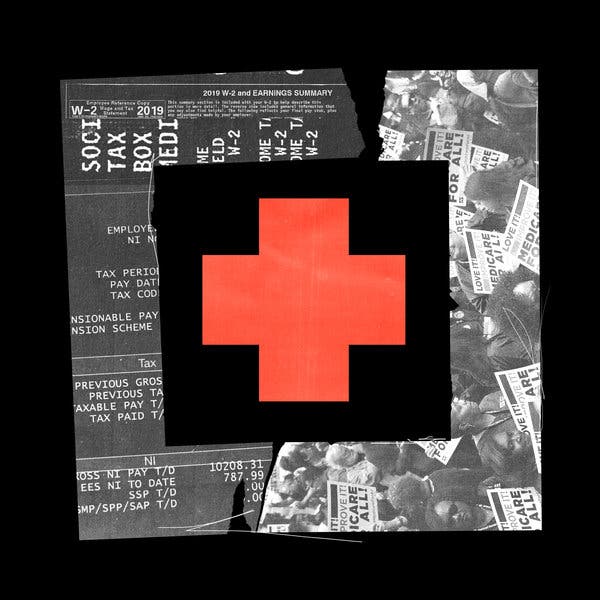
While the hospice industry used to be dominated by nonprofits, there has been a marked increase in for-profit hospices in both urban and rural areas. Some critics claim that for-profit hospices profit from Medicare policies to generate greater revenue. Although the majority of hospice care takes place in private homes, skilled nursing facilities and assisted living are available for some hospice services. Some states also allow hospice care in hospitals.
Non-profit hospice
There are two types American hospices: the nonprofit and the for-profit. A nonprofit hospice is not a for-profit and does not pay tax on Medicare or Medicaid funds it receives. A for-profit hospice, on the other hand, must pay taxes as it is a business that needs to make money. Generally, for-profit hospices are not required to give away patient care funds, but they may choose to use these funds to support other programs and services.
Although federal law doesn't require nonprofit hospices not to accept Medicare funds, they are required to follow certain regulations in order accept the money. They must also have Medicare approval and certification. Some hospices are able to go beyond what the law requires. However, for-profit hospices are required to provide basic training and may not be allowed to offer additional services.

Hospices for the benefit of others
It is essential to be able to tell the difference between a charitable hospice and one that is for-profit when you choose a hospice. Each has its advantages and disadvantages. Nonprofit hospices can provide better patient care than for-profit ones. They also have less highly trained staff and have fewer staff members per patient than nonprofit hospices.
Hospice can be an excellent option for those facing end-of-life decisions, but patients can feel disappointed and downed. Some hospitals and healthcare systems now offer transitional programs that can be used by patients who may not be ready for hospice. However, this leaves a gap in care at a critical time.
According to The National Hospice and Palliative Care Association the industry of hospice is $19 Billion in size and nearly all its funding comes from taxpayers. Family caregivers are now responsible for most of the care given to their loved ones by the hospice industry. Joy Johnston transformed her view of hospice care after she moved her mother's bowels. Constipation is a problem that many terminal patients face.
Medicare hospice
Medicare hospice is a program that enables beneficiaries to get care from qualified hospice providers. There are specific requirements for hospice providers. Hospice providers must meet with beneficiaries on a regular schedule to discuss their care plans. These meetings are mandatory for every 60-day benefit period. A beneficiary has the right of appeal if a hospice provider refuses to provide hospice care.

Medicare hospice doesn't cover emergency room or ambulance services. The hospice team will need to arrange those services for their patients, even if the emergency is not directly related to the patient's terminal illness. In such cases, Part D prescription drug coverage remains in effect. This coverage also includes medications that are used to treat pain or symptoms.
Medicare hospice payments were insignificant relative to Medicare total spending. For example, Medicare paid nearly $10.3million in 1985 for hospice care for about 4,700 beneficiaries. Multiplying the Medicare payment for hospice care by the savings ratio, 0.96 would give Medicare a net benefit of $3.7 million. This is still below the 0.01 percentage threshold.
FAQ
What is the point of medical systems?
In developing countries, many people lack basic medical care. Many people in these areas die before reaching middle age due to infectious diseases like malaria and tuberculosis.
People in developed countries get routine checks and see their general practitioners for minor ailments. Yet, many people suffer from chronic diseases such as diabetes and heart disease.
What are the health services?
A health service is a medical facility that offers healthcare services to patients. A hospital is an example of a healthcare facility. A hospital typically includes several departments like the emergency department and intensive care unit. It also has pharmacy and outpatient clinics.
What is the best way to learn about health insurance?
Keep track if you have any health insurance. Ask questions if you are unsure about your plan. Ask your provider to clarify it or call customer service.
When you use your insurance, remember to use the deductible on your plan. Your deductible refers to the amount you pay before your insurance starts covering the rest.
What is a health system?
The entire spectrum of health care is covered, including rehabilitation and prevention. It includes hospitals, clinics, pharmacies, community services, public health, primary health care, long-term care, home care, mental health and addictions, palliative and end-of-life care, emergency medicine, research, education, financing, and regulation.
Health systems are adaptive complex systems. They can have emergent qualities that cannot be predicted if you only look at individual components.
The complexity of health systems makes them difficult to understand and manage. This is where creativity steps in.
Creativity helps us find solutions to problems we don't know how to solve. We use our imaginations to create new ideas and develop ways to improve things.
Because they are constantly evolving, health systems require people who think creatively.
Individuals who think creatively have the potential to change the way healthcare systems operate.
What is a medical system?
Medical systems are designed so that people can live longer, more fulfilling lives. They make sure patients receive top-quality care when they're in need.
They ensure that the appropriate treatment is given at a timely manner. They provide doctors with the necessary information to help them give the best possible advice about the treatment that would be most effective for each patient.
Statistics
- Price Increases, Aging Push Sector To 20 Percent Of Economy". (en.wikipedia.org)
- Healthcare Occupations PRINTER-FRIENDLY Employment in healthcare occupations is projected to grow 16 percent from 2020 to 2030, much faster than the average for all occupations, adding about 2.6 million new jobs. (bls.gov)
- The health share of the Gross domestic product (GDP) is expected to continue its upward trend, reaching 19.9 percent of GDP by 2025. (en.wikipedia.org)
- For instance, Chinese hospital charges tend toward 50% for drugs, another major percentage for equipment, and a small percentage for healthcare professional fees. (en.wikipedia.org)
- For the most part, that's true—over 80 percent of patients are over the age of 65. (rasmussen.edu)
External Links
How To
What are the 4 Health Systems
The healthcare system is complex and includes many organizations, such as hospitals, clinics. pharmaceutical companies. insurance providers. government agencies. public health officials.
The goal of this infographic was to provide information to people interested in understanding the US health care system.
Here are some key points:
-
The annual healthcare expenditure is $2 trillion. This represents 17% the GDP. This is nearly twice the amount of the entire defense spending budget.
-
Medical inflation reached 6.6% for 2015, more than any other category.
-
Americans spend 9% on average for their health expenses.
-
In 2014, over 300 million Americans were uninsured.
-
Although the Affordable Health Care Act (ACA), has been approved by Congress, it hasn't yet been fully implemented. There are still gaps in coverage.
-
A majority of Americans believe that there should be continued improvement to the ACA.
-
The US spends more money on healthcare than any other country in the world.
-
Affordable healthcare for all Americans would reduce the cost of healthcare by $2.8 trillion per year.
-
Medicare, Medicaid, or private insurance cover 56%.
-
These are the top three reasons people don’t get insured: Not being able afford it ($25B), not having enough spare time to find insurance ($16.4B), and not knowing anything ($14.7B).
-
There are two types: HMO (health maintenance organisation) and PPO [preferred provider organization].
-
Private insurance covers many services, including doctors and dentists, prescriptions, and physical therapy.
-
The public programs include hospitalization, outpatient surgery and nursing homes. They also cover long-term care and hospice care.
-
Medicare is a federal program providing senior citizens health coverage. It covers hospital stays, skilled nursing facility stays and home visits.
-
Medicaid is a joint state-federal program that provides financial assistance to low-income individuals and families who make too much to qualify for other benefits.